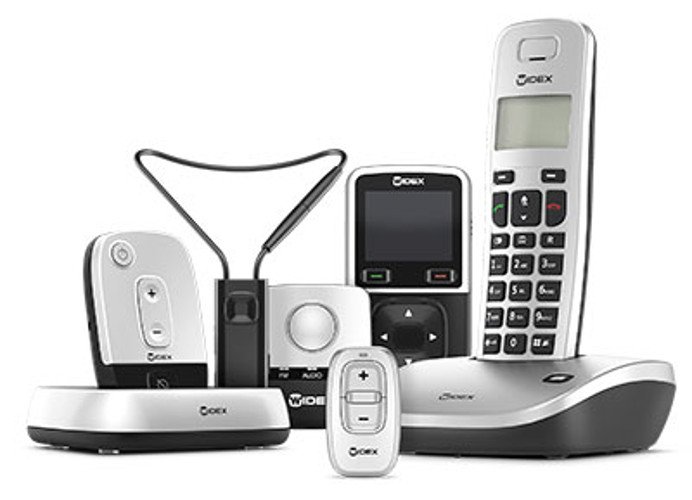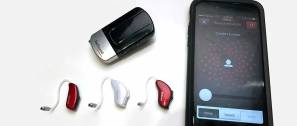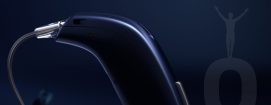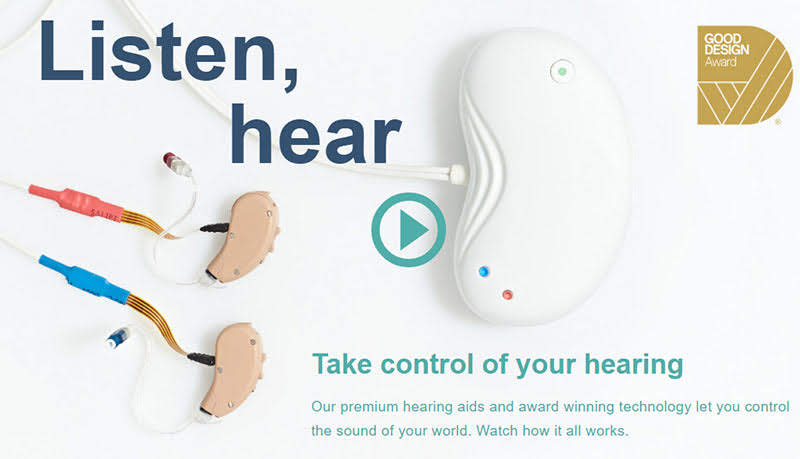Let's Talk The Future of Hearing Device Technology
The last few years have been an exciting time for hearing aids. They have got much better and more effective at what they are supposed to do. Something which wasn't necessarily true before. While more innovation in this department is always welcome and will continue to be delivered. Innovation outside that core focus is speeding up, let's talk about where we are and where we could be.
The hearing aid industry is no stranger to innovation, in fact, the fortunes of the big hearing device manufacturers are built on research, innovation and ever better hearing instrument technology. Before we talk about the possible futures of hearing aid technology, it is important to understand where we are and what is happening outside the hearing aid world that may have an effect. In the last six or seven years that innovation has focused on technology outside of the hearing aid. The new innovations were still designed to help you hear better in different situations but its focus was on ancillary devices and the connection to them.
Wireless Hearing Aids
The introduction of wireless communication to hearing aids opened up a huge amount of opportunity to hearing aid manufacturers. Initially, the only manufacturer who seemed to really understand the opportunity was Widex. Widex researchers believed that the real opportunity for wireless communication wasn't connecting to ancillary devices. It was connecting the hearing aids to each other which for the first time would allow two hearing aids to act as a system.
WidexLink
Unfortunately, BlueTooth capabilities at that time (2009) could not cope with the speed, information exchange, power drain and sound quality that Widex desired. So in the famous Widex style, they invented their own which they called WidexLink. Their wireless system was introduced along with their first ever wireless hearing aid range the Widex Clear.
I worked for Widex at the time and I remember clearly the excitement of the Clear launch. It was a staged launch with the BTEs coming first and the custom hearing aids coming later because of technical difficulties. Even today, with the advancement of the BlueTooth protocol, Widex Link is probably still the best platform for hearing aids to work together. Many also still feel it is the best platform for streaming high fidelity audio.
When hearing aids can make decisions together using the sound information from two different sources they deliver a much better quality of hearing, a much more natural hearing
As I said, the key was that Widex saw a future where hearing aids would act as a system, making decisions together to provide the very best strategy for a user to hear well in the situation they were in. This core belief is now accepted across the manufacturers and they all use varying levels of integration of devices to decide how the hearing aids work in any given sound situation.
Connection To Other Devices
Wireless hearing aids also allowed us to connect to other devices, it allowed us to connect a user to their TV, their home phone and their mobile phone among other things. This allowed far better experiences for people with hearing loss, allowing them a deeper immersion in their day to day experiences. Immersion and connection drove the next wave of innovation, the connection to the smartphone.

Every hearing aid manufacturer has by now developed smartphone apps and connectivity to iPhones and Android phones. Up to now, most of the manufacturers connected to those phones through a streamer except for two. The first and most famous of course were GN Resound with their original Made For iPhone hearing aids the Linx. Resound and Starkey went for a direct connection with the smartphone, something that no one else had done. This direct connection opened up so many opportunities for them and some pretty cool features for users. In late 2016 two more manufacturers joined the direct route, Oticon with its Opn device and Widex with its Beyond Made For iPhone hearing aids device. Update August 6th 2017: It now appears that Phonak is about to enter the fray, although if the hints and rumours are true. It may not be just Made For iPhone, it could also be Made For Android.
Find My Damned Hearing Aids!!!!
One of the coolest new features for many was the find my hearing aids feature. Lost your hearing aids or hearing aid? Well, the app on the phone would help you find where it was. That is a pretty cool feature as anyone who has lost a hearing aid will tell you. But there was much more than that, customised programmes based on location, streaming of audio and phone calls, complete control over the features of the hearing aids and even some fine tuning ability for the user.

If you have ever lost a hearing aid, then find my hearing aid is a feature that was sent from God himself!
Great Stuff, But Not For Everyone
These innovations were really great stuff, but surprising as it is to me, not everyone wants them. Some hearing aid users just want a hearing aid that they put on and forget. New users tend to be afraid of the technology while experienced users want more power over their devices. Don't get me wrong, these are generalisations of course, but relatively true. This is something that we have seen over the years, some of the innovations appeal to some of the users. This problem is compounded by how much the innovations appeal to the people who provide them, something I will touch on later.
The Latest Innovations in Hearing Aids
Okay, these things have led us to here, where we are today, they are also the basis for where I think we are going. Just recently two things have happened which are interesting for a tech nerd like me. Phonak has introduced rechargeable hearing aids and Oticon has introduced hearing aids that are connected to the internet of things. Two very different innovations but ones that point to the possible future of hearing aids.
Are rechargeable hearing aids about to go mainstream?
Rechargeable hearing aids have been around for a long time, Siemens and Hansaton have provided rechargeable hearing aids with some success for a long time. GN ReSound dabbled with the system with their Resound Pulse, something that they probably want to forget to be honest. It was a disaster.

The issue with rechargeable hearing aids has always been the amount of power available and the concern that a hearing aid user would not get a full day of use in particular if they use a wireless streamer. Recent technology changes have cracked that problem meaning that rechargeable hearing aids will be much more attractive to users. Because Phonak has gone down the route, I think we will see more of the manufacturers doing so, although that depends on power demands of new innovations as they appear.
Mind Controlled Hearing Aids
Update August 6th, 2017: In just the recent past there has been serious work undertaken in connecting the working of hearing aids to your consciousness. In essence, they hope that signals from the brain in relation to the focus of your attention can ensure that hearing aids actually concentrate on the voice you want to hear. The work is in its early stages, but it is fascinating. It is also a sign of a deeper integration between technology and our consciousness.
The Internet of Things
Oticon (One of the biggest hearing aid manufacturers in the world) has just introduced their new device the Opn. In a rather far-sighted way they have designed it to have access to the IFTTT (If This, Then That) network. It does so by connecting to the internet via the Oticon ON app on a smartphone. The IFTTT network is a network that we will hear more and more of over the next couple of years.
It is designed to allow you to set triggers, which they call recipes, whereby one action, automatically triggers another. For instance, you can set up an IFTTT recipe that ensures everything you post on Twitter is automatically posted on Facebook. It also has applications in the physical world; applications that will just grow as the internet of things (IOT) grow.

One such real-world action, for instance, is setting your heating to come on automatically once a certain outside temperature has been reached. The potential for recipes are endless and only curbed by the number of devices that are connected to the IOT. The case uses that Oticon has spoken of include a notification in your hearing aids being triggered by the doorbell being rung. Lights in your house or the coffee machine coming on in response to your hearing aids being turned on in the morning.
Amazing Vision
They have set up far more recipes than just those which allow automation of triggers for many things. I believe that this is an amazing vision, this is a far-reaching innovation that came out of left field. This type of thinking will allow a whole new future for hearing aids and the benefits they provide for users.
Oticon and IFTTT opens up whole new future for the benefits that hearing aids will provide for users
My one complaint is that I don't think Oticon have gone far enough, I think if they focused on providing ear level sensors that tracked activity, pulse and blood oxygen levels they would have a killer device that changed hearing aids forever. If Oticon had integrated ear level sensors that monitored vitals, coupled with an accelerometer that could tell when someone has fallen.
They could set the hearing aids to trigger a real-time call for help. More than that, they could continuously monitor vital signs for health or fitness tracking. They could design an IFTTT recipe triggering weekly reports to be sent to anyone who the user wanted to have access to, like a physician. This type of feature set would change a hearing aid to a device that was focused on general health.
Fuel Cells For Hearing Aids
In recent news it appears that Fuel Cell hearing aids may well be close to ready for the market. The conversation around fuel cell powered hearing aids started in Denmark in 2009. It has blown hot and cold since then. Fuel cells are hydrogen-powered power sources because hydrogen needs to be contained in a pressurised container, most of the research has been undertaken on Methanol.
Methonal is Hydrogen-rich but it does not need a compressed container. In theory, you could recharge your hearing aids in the same way you charge a cigarette lighter. It could be done in thirty seconds and you would have up to three days of power.
Widex actually lodged a patent for a working concept in 2011 and a prototype was even manufactured. However, things went quiet again after that. In 2015 it was decided that the project would heat up again and there was a fundraising round. The work to finally bring the concept to market began in early 2016 and it appears that we may actually see the concept delivered to market in the near future. Stay Tuned. Update August 6th, 2017: Widex is delivering rechargeable hearing aids later this year using the ZPower silver zinc system. However, they have not given up on Fuel Cells and they hope to deliver them in 2018.
An Integrated Life
This type of wider thinking will allow hearing aids to be integrated into a wider way to somebody's life, delivering benefits far more than the core function of hearing better. That is what technology is for, to make our life better, smart thinking and innovation can allow future hearing aids make people's lives better in so many different ways.
Nobody gives a toss about your hearing aids and you people are sheep! Sheep I tell you!
Hearables and The Cultural Effect
Hearables exploded onto the scene a little over three years ago, however they have already made a huge impact. Culturally for the first time, ear-level devices are becoming an accepted norm. This will have a great effect on the cultural acceptability of hearing aids. The stigma of hearing aids is only in your own mind by the way, no one else cares a toss about the fact you wear them.
It is only you and your pre-conceived ideas that cause any issues. Believe me, a person walking around giving the wrong answers to questions and saying what? all the time looks far worse than someone who has chosen to wear hearing aids and remain active in their life. However, if you see more and more people using devices in their ears you won't feel so bad about wearing your hearing aids. God love the human condition, we are like sheep, sheep I tell you.
Medical Use For Hearables
Hearables and their function should be giving the hearing aid industry clear ideas about the shape of things to come. They play music, track fitness and allow a deeper and easier connection to the devices we love. With the recent introduction of Jabra headsets and their collaboration with TrackerMD, hearables are finally entering into the medical tracking world.
It is envisioned that the collaboration will allow physicians monitor the real-time health and fitness of their Patients for many reasons. It will also allow physicians to collaborate with each other and other professionals involved in primary care.
A Medical Use Case For Hearing Aids
As I have already said, if Oticon had introduced sensors at the ear level we would be talking about a complete case use change for hearing aids. I believe that these types of innovations will change everything. They will raise hearing aids beyond what they are now to devices that will make your life easier in so many different ways.
There will be medical and fitness uses beyond what we even envisage today. It is possible to take an ECG through an ear level sensor. Perhaps in the future, your hearing aids will not just track vitals but also give you a weekly or even daily ECG.
Self Fitting Hearing Aids
Self-fitting hearing aids have been available for some time in Australia. A company called Blamey and Saunders have very successfully offered self-fitting hearing aids for some time now. The hearing aids are purchased online and a kit is sent out to help you fit them.

Self-fitting hearing aids have also become available in the US with the recent introduction of the iHear product line up. In fact iHear have the only FDA approved home hearing test kit in the States. So there is a demand for the products and it appears that demand is growing. The devices are fit by the user and then fine-tuned on an ongoing basis by the user. Reports in relation to the devices are pretty good, however, it is clear that this concept is only suitable for people who are able for it or confident to use it.
Self Fine Tuning of Hearing Devices
Self-fine tuning is a concept that has been around for a while. Several years ago Siemens introduced a system whereby the user could self-fine tune their hearing aids to a certain extent. The idea never really caught the imagination of users, however, I think that it is an idea that is becoming to have its time. With the release of the Widex Beyond hearing aids and app, Widex has given the power of self-fine tuning to users. It is limited in that the fine-tuning changes are both limited and general in nature. The fine tuning is undertaken on three handles, bass, mid and treble.
This type of fine tuning ability for users makes sense, users should have some control over their hearing aids, but only the control that they are comfortable with. I think that there is a most definitely a wider place for self-fine tuning and fitting hearing aids within the market. I also believe that they will become more popular over the next few years. Whether the mainstream hearing device manufacturers decide to go down this route, of course, is another thing.
The Future of Hearing Aids
So what will we see in the future, I don't know, haha bet you weren't expecting that! However, I will hazard an educated guess for you. I think that rechargeable hearing aids will eventually become mainstream, but it will take a while. Battery technology still needs to become better to meet the needs of people who like to take full advantage of their streaming capacity. If indeed Fuel Cell technology is proved worthy, I think it too will become mainstream. I believe we will see new hearing aid types being introduced and devices that offload some or all of their processing to the cloud via a smartphone connection.
I think that if the market continues to demand self-fine tuning and fitting, it will come to pass in a wider way. However, from all of my conversations with advocates of this type of technology, I think that there will still be some involvement of a professional. I think even if the self-fitting market grows, it will probably grow in tandem with the traditional market, I don't think it will replace it.
Remote fine-tuning of your hearing aids by your professional will also grow. If you want changes made to the way your hearing aids work in the future. You won't have to attend your professional's office, they will be able to do it via the internet.
Hearing aids will come equipped with sensors for tracking vitals, Widex has registered a patent already for a hearing aid device with in-ear sensors. Others are probably researching this and will certainly introduce it. It simply makes sense, people who use hearing aids have changing needs, they are more active and health conscious as is most of society.
Those changing needs and wants will shape and direct the features that will be provided. It is simple, the market demands and a smart company and provider delivers. As I said providers will have to adapt and understand these technologies. Many of them don't necessarily understand the tech and little understand the demand.
This is going to have to change, because the consumer, that's you, will want what you want. It will be up to the provider to deliver it. The possibility for integration in your life and with all of the devices you use is only measured by our imagination. The future is so bright, we need to wear shades!
As you may know, we released a consumer guide for hearing aids on Amazon in paperback and Kindle recently. We will continue to update that book with outlines of newer technology offerings as they are introduced. When we update the book we will leave an update message on the page on our site.
If you like what you see, share it so others can benefit
Find An Independent Hearing Aid Centre in Your Area
Arrange a consultation with a trusted Independent hearing healthcare professional in your area




